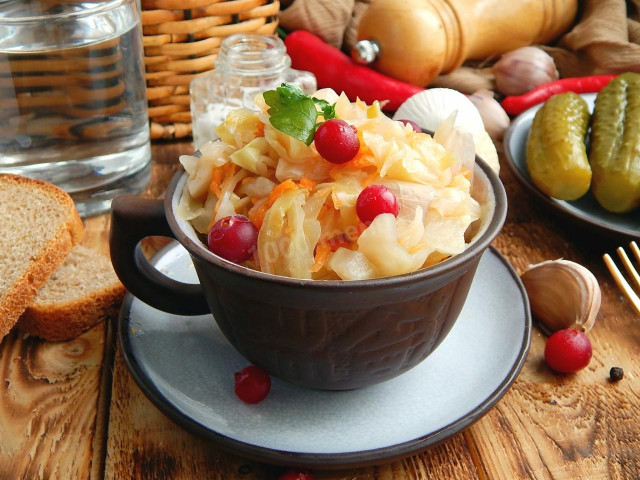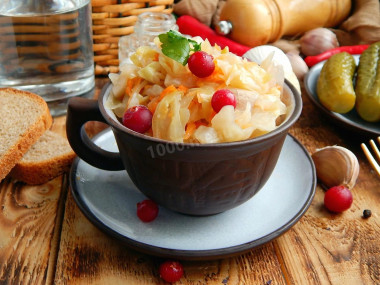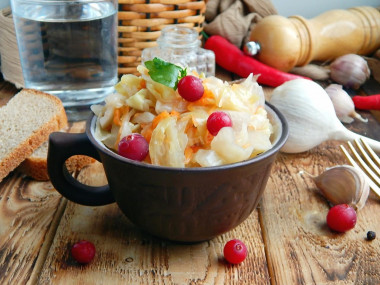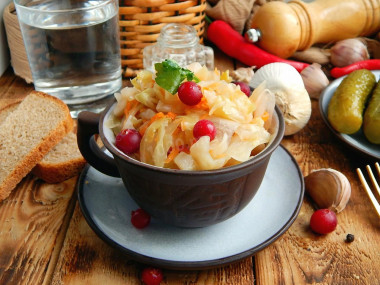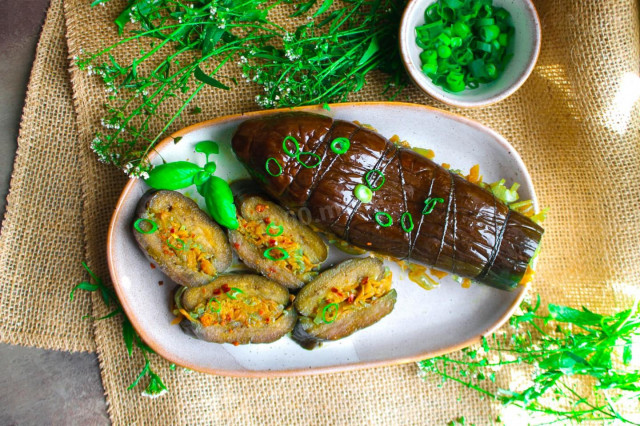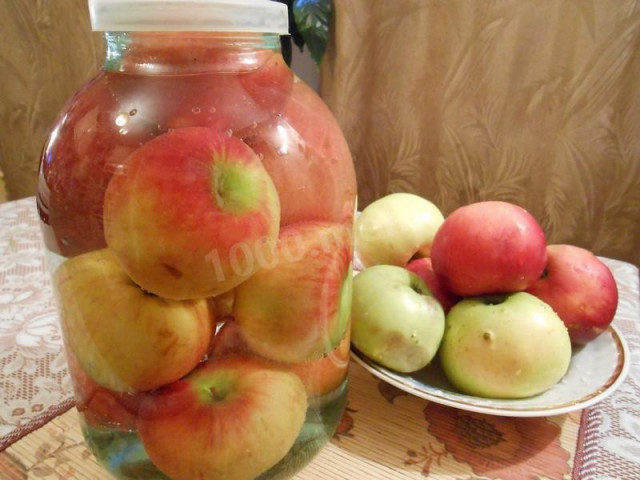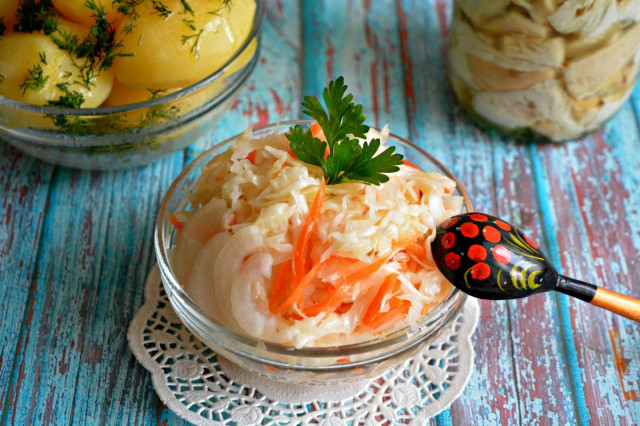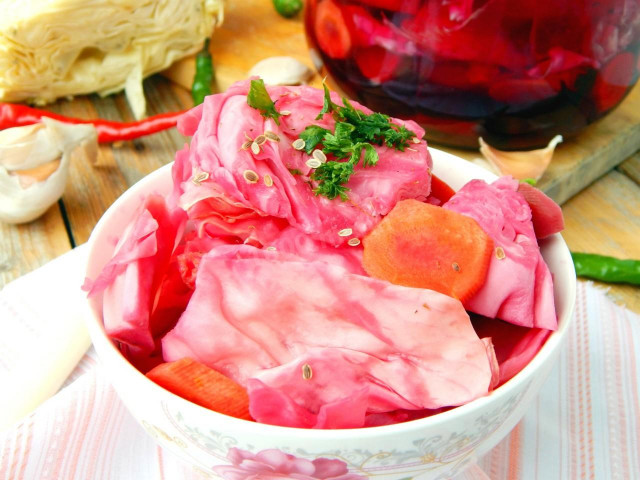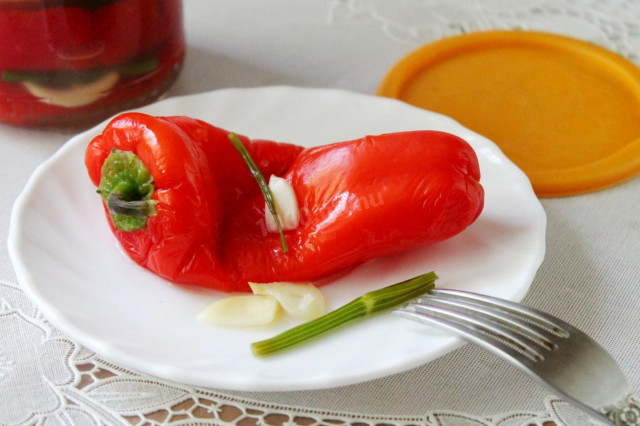Composition / ingredients
Step-by-step cooking
Step 1:
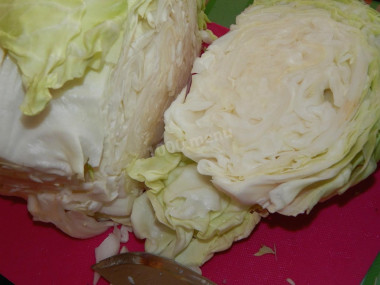
Prepare the ingredients for sauerkraut with horseradish. In addition to horseradish and white cabbage, we will use carrots and spices such as bay leaf, black pepper, salt, sugar, water. White cabbage is better to use fresh and juicy, as a rule, white cabbage is fermented at the end of September – in October. The heads should be tight, white, without green leaves.
Step 2:
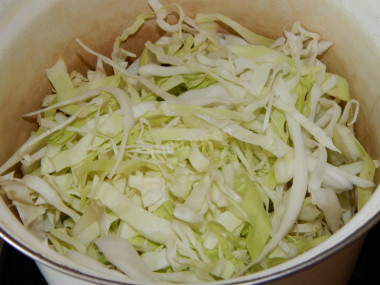
White cabbage is cleaned from the top dirty leaves. We cut the cabbage into several parts, cut out the stalk, chop the cabbage or cut it into thin strips with a knife. If cabbage is going to be fermented in large quantities, it is more convenient to use a special shredder or a food processor.
Step 3:
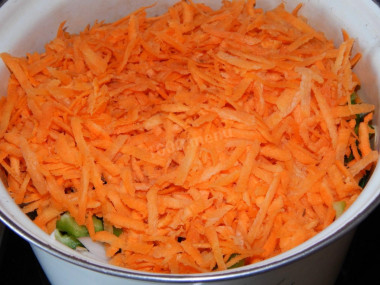
Fresh and juicy carrots are washed, cleaned and grated on a coarse grater or also crushed with a food processor. In the harvest season, carrots are very tender, and you can not remove the skin from the vegetable, just wipe it with a brush and wash it with water.
Step 4:
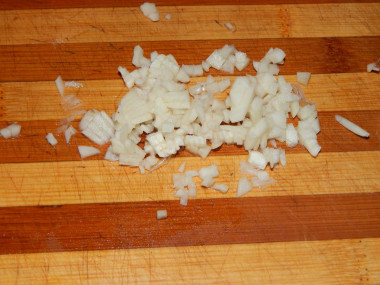
The horseradish root is cleaned and grated. But fresh horseradish is very vigorous and pungent, and in order not to damage the mucous membrane of the eyes, you can just cut the horseradish root into small pieces, it will give its flavor to the cabbage snack completely, but it will not spoil its taste.
Step 5:
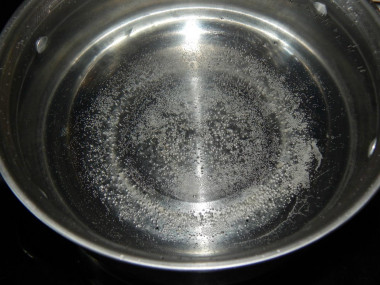
Prepare the brine. Pour water into a saucepan, add coarse, non-iodized salt, put on fire, bring to a boil, mix with a spoon so that the salt completely dissolves. Turn off the fire, let the brine cool completely. In a deep container we put cooked vegetables: white cabbage, carrots and horseradish. Add the bay leaf, black pepper, and mix the ingredients.
Step 6:
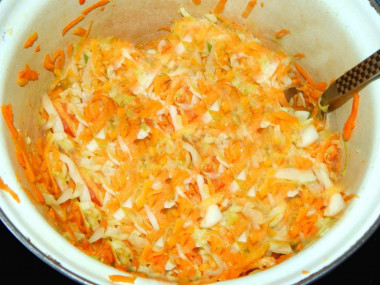
Pour the brine over the cooked cabbage with carrots and horseradish. Cover the pan with a lid, but not tightly so that the air escapes. We leave the cabbage leavened at room temperature. Fermentation should begin soon. After three days, add sugar to the container with sauerkraut, mix. We remove the container with sauerkraut in a cool place, for example, in the refrigerator.
Step 7:
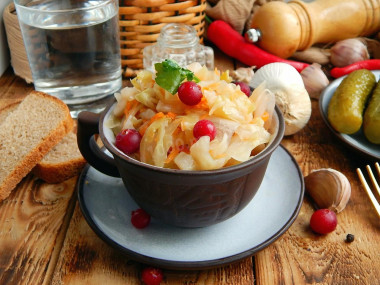
After a day, sauerkraut can be served to the table. Or we lay out the workpiece in pre-prepared sterilized jars, roll up the lids and put them away for storage in the pantry. Bon appetit!
Caloric content of the products possible in the composition of the dish
- Carrots - 33 kcal/100g
- Dried carrots - 275 kcal/100g
- Boiled carrots - 25 kcal/100g
- Bay leaf - 313 kcal/100g
- Granulated sugar - 398 kcal/100g
- Sugar - 398 kcal/100g
- Black pepper peas - 255 kcal/100g
- Salt - 0 kcal/100g
- Water - 0 kcal/100g
- White cabbage - 28 kcal/100g
- Boiled white cabbage - 21 kcal/100g
- Horseradish Root - 59 kcal/100g

